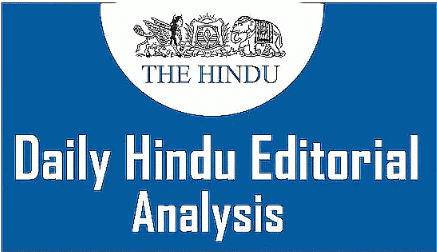The Hindu Editorial Analysis- 31st January 2025 | Current Affairs & Hindu Analysis: Daily, Weekly & Monthly - UPSC PDF Download

The Science is Clear, Crowd Disasters are Preventable
Why in News?
There was a tragic crowd crush at the Maha Kumbh in India this week, resulting in the deaths of 30 people. Unfortunately, such disasters have become increasingly common around the world at religious gatherings, concerts, and sports events.
Understanding Crowd Crushes
Crowd crushes happen when too many people gather in a small space, causing the density to exceed safe limits. Research indicates that injuries are likely at a density of five people per square meter, and fatalities can occur at seven people per square meter. In the Maha Kumbh incident, a large crowd behind a barrier led to dangerous compression, resulting in loss of life.
Similar Tragedies Worldwide
- November 2021:. music concert in Houston, Texas, U.S., resulted in the deaths of 10 people due to a crowd crush.
- October 2022:. Halloween crowd crush in Itaewon, South Korea, claimed the lives of 159 individuals.
- April 2023: Overcrowding at a charity event in Sanaa, Yemen, led to 90 deaths.
- December 2024:. religious festival in Nigeria resulted in 35 fatalities due to a crowd crush.
The Role of Governments and Event Planners
Often, the blame is placed on victims, with the assumption that crowds act uncontrollably. However, scientific evidence contradicts this notion. Individuals within a dense crowd lack the ability to control or perceive the overall situation. When density reaches critical levels, people struggle to breathe properly. It is the responsibility of local governments, event organisers, and promoters to manage crowd density effectively.
Preventive Measures
Event planners and authorities can implement simple and cost-effective measures to prevent crowd crushes:
- Increase Entry and Exit Points: Allow for smoother movement by expanding entry and exit points.
- Stagger Arrival Times: Prevent sudden crowd surges by staggering arrival times.
- Keep Pathways Clear: Eliminate obstacles that create bottlenecks by keeping pathways clear.
- Segment Crowds: Reduce dangerous clustering by segmenting crowds into smaller groups.
Example: In Times Square, New York, authorities create small sections of 100 people during New Year’s Eve celebrations to control density.
The Economic Factor and the Need for Regulations
In many countries, there are no strict laws mandating crowd control measures at events. Event organisers often have financial incentives to allow high crowd density to maximize profits from ticket sales, food, and merchandise. Governments should introduce mandatory safety regulations for large events to safeguard lives. Small changes in planning can significantly reduce risks while still allowing people to enjoy events safely. Delaying action will only result in further tragic losses in preventable crowd disasters.
Conclusion
Crowd crushes are tragedies that can be prevented with proper planning and management of crowd density. It is crucial for governments and event organisers to take responsibility and implement simple, cost-effective safety measures to protect lives. Enforcing regulations can help prevent future disasters and ensure public safety at large gatherings.
|
38 videos|5288 docs|1117 tests
|
FAQs on The Hindu Editorial Analysis- 31st January 2025 - Current Affairs & Hindu Analysis: Daily, Weekly & Monthly - UPSC
| 1. What are the primary causes of crowd disasters? |  |
| 2. How can crowd disasters be prevented? |  |
| 3. What role does technology play in preventing crowd disasters? |  |
| 4. What lessons can be learned from past crowd disasters? |  |
| 5. What is the significance of crowd psychology in managing large gatherings? |  |





















